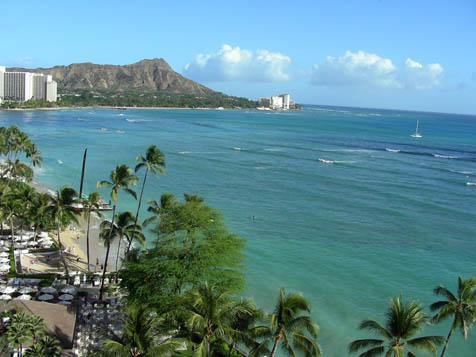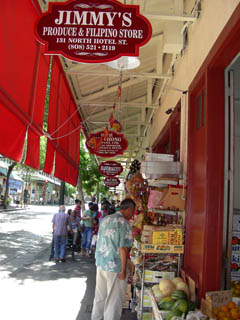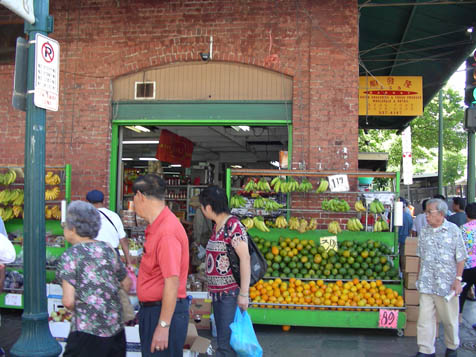O’ahu and the Spirit of Hawai’i
Bird of Paradise

“There are two ways to see Hawai’i,” a friend once told me. “One, you get off the plane, strip down to your bathing suit in your hotel room and spend a week down at the pool, reading well-written contemporary trash that has absolutely nothing to do with Hawai’i. Two, explore these amazing islands and learn from the Hawaiian people.”
For 40 years, I’ve worked diligently on number two. Surprisingly to some, perhaps, I’ve found O’ahu-with Honolulu a virtual metropolis of 900,000 residents-in some ways the most interesting of the Sandwich Islands.
“This is where you find the real Hawai’i,” an old friend, Joyce Matsumoto, once said to me. “Waikiki is where you really find the Aloha spirit,” insisted a young, well-traveled mainlander who’s been to Hawai’i often.
When Hawaiians talk about the Aloha spirit they really mean it; they’re proud of their friendliness toward the hordes of tourists, though you might expect them to be a bit cranky, since the U.S. grabbed this lovely necklace of green islands from them.
Capt. James Cook visited in 1778 (and died there), naming the archipelago the Sandwich Islands in honor of Great Britain’s Earl of Sandwich. But the name didn’t stick, nor did the English claim.

As it is, Hawai’i-2,400 miles across the Pacific from Santa Barbara-seems exotic enough. On one visit, getting off an American Airlines jet in Honolulu, I jokingly asked my wife Sue if we should exchange money. “Yes,” she agreed, fooled momentarily by the long plane ride and the tropical splendor we’d glimpsed from the plane as we glided in.
Anyone wanting to get a look at more Hawaiiana than can be seen in a hotel lobby should head for Honolulu’s world-famous Bishop Museum. It’s jammed with thousands of relics, including the collection of Hawaiian aristocrat Bernice Pauahi Bishop, the great-granddaughter and last descendant of King Kamehameha I.
As for hotels, Sue and I are restless types and like to try out various ones, dropping our bags at different doors in order to compare. The Halekulani, smack in the middle of Waikiki, is hands-down the top hotel in O’ahu, perhaps in all the islands. We were welcomed by ex-Santa Barbaran Janis Clapoff, Halekulani general manager and former managing partner at the San Ysidro Ranch and GM at the Simpson House Inn here in town.

The ocean lapped at the sandy beach below our room and we could gaze down from the balcony at sunset at a quartet performing soft Hawaiian favorites while a graceful hula dancer swayed. From the Halekulani, it’s a short stroll down the beach for a splashy outrigger ride.
Next stop was in the swank Kahala neighborhood, where one of our favorites, the Kahala, sits on a wide stretch of beach, and guests can frolic with dolphins in the pool. Here you’re away from the hustle and bustle of Waikiki, but a hotel shuttle bus makes frequent trips to and from town and to a nearby shopping mall.
By then we were ready for Action City-the 3,386-room Hilton Hawaiian Village. On 22 acres, you can find more than 90 shops and boutiques, five pools, nightly entertainment, and 20 restaurants. And bars and lounges. The Blue Hawaiian drink was invented here, they say.
From our room in the Ali’i Tower-which boasts a private pool/snack bar for guests, a doorman, and concierge-we watched the finish of the Na Wahine O Ke Kai women’s-only outrigger race from Moloka’i. Then we headed down to the open-air beach bar for beer and burgers and to hear the stories from weary winners and losers.
Here are some of the things Sue and I did rather than lounge around the pool: We took a bus to Diamond Head and climbed the trail to the top for 360-degree views. (Wear good hiking shoes.) We visited the small Waikiki Aquarium and took a bus to Honolulu’s historic Chinatown. During World War II, it was swarming with servicemen out for a good time. The Chinese Chamber of Commerce offers walking tours [(808) 533-3181 for reservations].

I can’t imagine visiting O’ahu without making a day trip to the rural world of wide open spaces and surfing beaches of the North Shore. The old town of Hale’iwa features both the Old Hawaii of Matsumoto’s store and the new wave of art galleries and funky restaurants.
The ocean’s a lake in summer but surging with 30- to 40-foot breakers in winter. We arrived in time for breakfast at Cafe Hale’iwa for a filling plate of buttermilk pancakes, two eggs, bacon, and toast for $8.50.
Contrary to some guidebooks, the scenic Waimea Valley is no longer a commercial enterprise but the nonprofit Waimea Valley Audubon Center. It features a lovely nature trail and a waterfall at the end of a three-quarter-mile stroll. There’s a sacred Hale O Lono Heiau just off the parking lot.
At the far west corner of the North Shore is the Turtle Bay Resort, the only hotel on that shore. It is slated for a $60-million renovation but is in the midst of controversy over expansion plans.
That afternoon, before heading back to the canyons of Waikiki, we pulled off the road in Hale’iwa for a $12 dish of shrimp scampi at Giovanni’s, one of several shrimp trucks parked around town.
Back in Waikiki, we had a choice of either fine dining or beer and fresh fish at the loud, party-central Duke’s Canoe Club. It’s a spot for listening to slack key guitar music, chatting up folks at the next bar stool, and watching the sunset. But it was crowded and loud, so we found an oasis of peace upstairs at the Hula Grill, with its view through the palms of the peaceful Pacific.
One night, Sue and I opted for the most elegant eatery on the beach, La Mer, at the Halekulani, Hawaii’s only AAA Five Diamond restaurant. Here we relaxed in the balmy evening, splurged on Champagne and chef Yves Garnier’s French-influenced dishes, and watched the moon dance on the water.
On our last night, we taxied a few blocks from the beach to King Street for dinner at Chef Mavro’s, commanded by the genial George Mavrothalassitis, formerly at La Mer. The room is delicately colorful, and his menu is creative, using local ingredients. He’s a master of wine pairing and the roasted Muscovy duckling was the best I’ve ever tasted.



